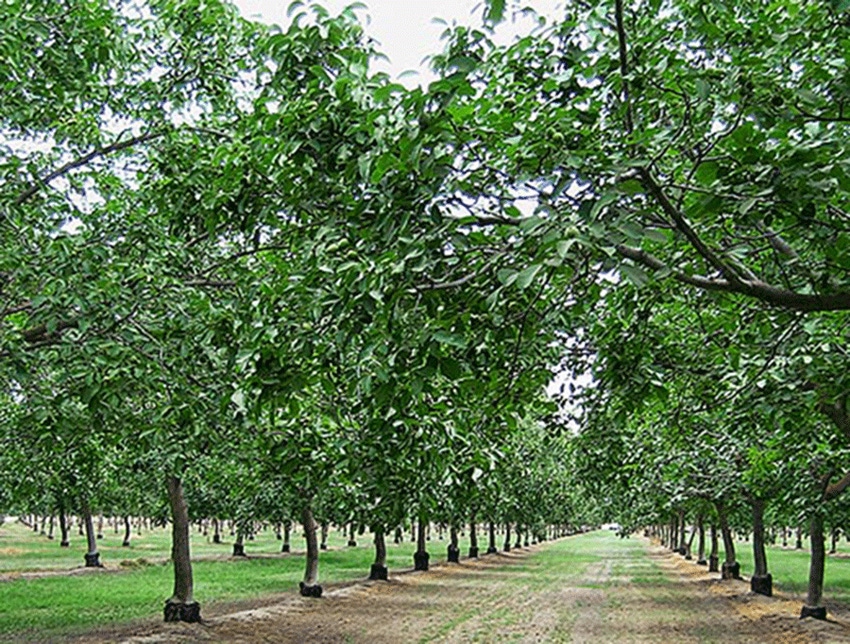
Good news: A recently-available handbook has tips to make it easier manage your small orchard. It includes photos, expert advice, and hints to get you on track.
Chapter 1 in “The Young Orchard Handbook” is a step-by-step chronicle about water: determining how much water your system can store, irrigation scheduling, and other topics.
Walnuts need a deep, well-drained soil (at least 5 ft.), or they will do poorly. Shoots, particularly blossoms, do not tolerate frosts. Once growth begins in the spring, rainy weather can cause severe losses from walnut blight.
Irrigation scheduling for young orchards is complex. Not only are the demands of the tree constantly changing, the root zone — and thus the amount of soil from which the tree can take up water — is also constantly changing.
With all these moving parts, it can be easy to over-irrigate or under-irrigate an orchard, setting back growth and potentially endangering root health. By knowing the application rate of your irrigation system, the water-holding capacity of your soil type, and the trees’ water use, you can calculate the maximum amount of time that can pass between irrigations.
Waiting longer than this period will make trees water-stressed. Knowing how frequently you want to irrigate, based on other management limitations, system application rate, time elapsed since the last irrigation, and tree water use, you can determine how long to run your system to backfill water use.
Trees range in size from very large (80 feet tall) to medium height (40 feet to 50 feet). They require a 30-foot to 60-foot spacing.
Walnut culture has changed drastically in the last few years due to introduction of new varieties. Production in coastal climates should be limited to late-leafing varieties.
Walnuts are monoecious (separate male and female flowers on one tree), and dichogamous pollen is shed when female flowers are not receptive); thus, two different varieties must be planted to ensure overlapping bloom periods and fertilization. An acre of land can support 100 to 200 trees.
The three major nutrients for plant growth are nitrogen, phosphorus, and potassium. Of these, nitrogen is the primary concern for young trees; it is critical for leaf growth and development of plant proteins. If too little is available, leaves will be smaller in size, off-green in color, and overall growth will be stunted. If in excess, leaves will be dark green, and vigor will be high. Potassium and phosphorous are required for woody tissue development. These nutrients rarely have been observed to cause toxicities, and deficiencies are not common in non-bearing trees.
Pests are discussed in depth; probably the most frequently encountered and most damaging pests in young orchards are pocket gophers, especially in almond orchards, but California ground squirrels, meadow voles, jack rabbits, deer, and coyotes are also common. Knowing when vertebrate pests are active and breeding, and what they eat, can help inform their management.
Ripping the orchard before planting, early and consistent monitoring, management of invading burrowing pests, and where necessary, large vertebrate exclusion, can help to ensure healthy, vigorous, and uniform young orchard development.
Pest and disease management in young orchards is important to establish the desired tree architecture, ensure early growth, and protect the long-term health of the tree. Monitoring for and managing insects that bore into shoot tips, scaffolds, and trunks are key to above-ground early pest management. Timing pruning to avoid rain events, managing tree vigor, and avoiding wetting tree trunks can decrease likelihood of above-ground disease infection. Root pests and diseases are best prevented with proper site preparation, rootstock selection, and water management.
Additional chapters discuss pests, fertilization, location, and much more. The handbook is available online too. (http://ccfruitandnuts.ucanr.edu/files/238596.pdf)
About the Author(s)
You May Also Like




